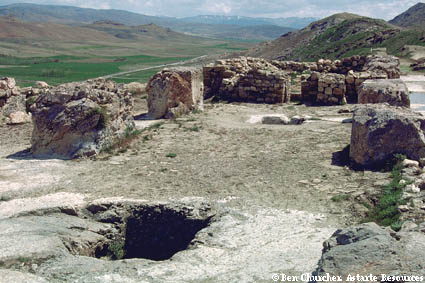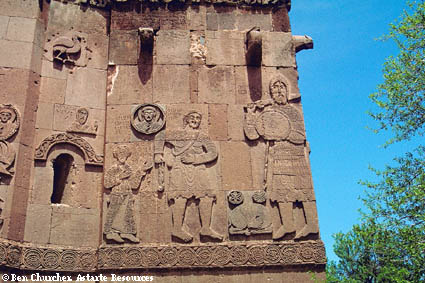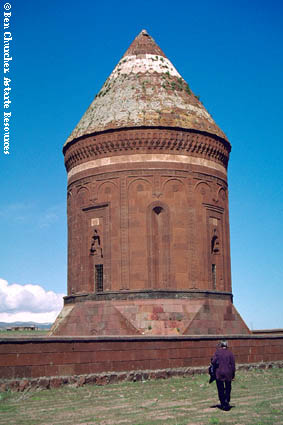|

|
To the east of Lake Van is the site of Cavustepe. This site, seen here running along the spine of a ridge, dates to the Urartian period. The Urartians came to dominate much of eastern Turkey following the collapse of the Hittite Empire. Their period of great prosperity was in the ninth to seventh centuries BC. Constantly harassed by the Assyrians from the south, the Urartians were eventually assumed into the Persian Empire.
|
|

|
A close up of the palace storerooms at Cavustepe. The square holes in the floor gave access to rock-cut water cisterns. Large amounts of burnt wheat was found in these storerooms, some of which can still be picked up when you walk among the ruins. Remarkable considering this wheat was burnt with the final sack of Cavustepe in the seventh century BC, probably at the hands of Sythians.
|
|

|
One of the most wonderful monuments in eastern Turkey is the beautiful Armenian Church on Agatamar Island in Lake Van. Known as the Church of the Holy Cross, it was once attached to the palace of the Armenian Patriarch. The churchís exterior is covered with deep reliefs depicting biblical scenes. In this photo David on the left, with sling in hand, is about to take on Goliath. This church was built and decorated around AD 925.
|
|

|
On the west shore of Lake Van lies Ahlat , once a major centre during the Seljuk period (13th century AD). At the small town of Ahlat is an impressive Seljuk cemetery with intricately carved headstones and at least a dozen of these impressive mausoleums or Kumbets. The Kumbet is shaped like a nomadís tent as the Seljuks were the first Turkic people to arrive in Turkey from Central Asia; still with memories of their ancestry on the steppes of Asia intact. These mausoleums were built for local rulers of what was an important Seljuk town in the early Medieval period.
|
|
Please select another section
PART I: TURKEY: THE SOUTH COAST
PART II: THE MESOPOTAMIAN UPLANDS
|

